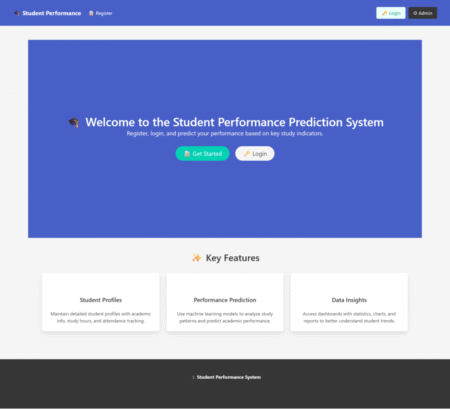 With the global digital advertising market surpassing $600 billion, businesses are actively seeking efficient, cost-effective solutions to reach their audiences. One of the most empowering tools emerging in this space is the Self-Serve Advertising Platform. These platforms give advertisers full control from campaign setup to optimization without needing constant human intervention or an ad sales team.
With the global digital advertising market surpassing $600 billion, businesses are actively seeking efficient, cost-effective solutions to reach their audiences. One of the most empowering tools emerging in this space is the Self-Serve Advertising Platform. These platforms give advertisers full control from campaign setup to optimization without needing constant human intervention or an ad sales team.
According to Statista, platforms like Facebook and Google dominate the landscape by offering self-serve capabilities that democratize advertising for all business sizes.
In this roadmap, we break down what self-serve advertising really means, how the architecture works, and how developers can create scalable, robust solutions that serve both advertisers and publishers.
What Is a Self-Serve Advertising Platform?
A Self-Serve Advertising Platform enables advertisers to create, manage, and optimize digital ad campaigns independently. Unlike managed service models where campaign execution is handled by the AdOps team, these platforms allow full autonomy to advertisers through user-friendly dashboards and integrations.
Self-Serve vs. Managed Ad Campaigns
| Feature | Self-Serve Platforms | Managed Campaigns |
|---|---|---|
| Control | Full control by advertisers | Controlled by AdOps team |
| Setup Time | Immediate | Requires coordination |
| Cost Structure | Lower (no agency fees) | Higher (includes service costs) |
| Customization | High | Medium to Low |
| Best For | SMBs, Agencies, Enterprises | Enterprises, High-budget campaigns |
Explore more: What Is ATL, BTL & TTL Marketing? Differences and Real Examples
Key Components of a Self-Serve Ad Platform
- User Interface (UI)
A responsive, intuitive interface that supports campaign creation, user management, and real-time reporting. - Campaign Management
Features for budget setting, targeting, creatives upload, scheduling, and format selection. - Reporting Dashboard
Tracks impressions, clicks, conversions, and real-time campaign health with custom filters. - User Management
Handles access roles, permissions, and account configurations. - Platform Integrations
Connects with DSPs, SSPs, CDPs, and CRMs to enhance campaign reach and data targeting.
Monetization Models
| Model | Description |
| CPC (Cost-per-Click) | Charges only on clicks; ideal for ROI-focused campaigns |
| CPM (Cost-per-Mille) | Charges per 1,000 impressions; suitable for brand visibility |
| Subscription | Offers platform tiers with advanced features |
| Rev Share | Takes a percentage from ad spend; good for publisher marketplaces |
Technical Stack Recommendations
| Component | Suggested Technologies |
| Frontend | React.js / Vue.js |
| Backend | Node.js / Python / Go |
| Database | PostgreSQL, MongoDB |
| Ad Server | Kevel or custom-built |
| Real-Time Data | Apache Kafka, Spark |
| Auth & Payments | OAuth, Stripe, Razorpay |
Example Use Cases
- AdTech Company: Built a platform integrated with DSPs to let clients create and track campaigns.
- OTT Streaming Service: Enabled brands to target audiences by behavior and genre preference.
- Advertising Agency: Created a white-label dashboard for campaign creation and client reporting.
Full guide: SEO vs Google Ads vs Omni-Channel: What Delivers Real ROI
Challenges and Solutions
| Challenge | Solution |
| Ad Fraud | ML-based pattern detection and bot filtering |
| Poor Targeting | Advanced audience segmentation and pixel integration |
| Weak UI/UX | Design-first approach with prototyping and user feedback |
| Integration Failures | Open API docs and sandbox testing |
Conclusion
A Self-Serve Advertising Platform empowers businesses to scale their ad efforts while maintaining control, flexibility, and visibility. Whether you’re an AdTech vendor, media publisher, or agency, building your own platform enables you to create a stronger value proposition.
Want to launch your custom-built advertising solution? Partner with Inexture Solutions your trusted team for building robust Social Media Marketing Services and self-serve ad platforms that deliver measurable business results.
Frequently Asked Questions (FAQs)
Q1: What makes a self-serve ad platform valuable for advertisers? A: It offers full control, transparency, real-time insights, and cost efficiency without relying on intermediaries.
Q2: Is building a self-serve ad platform cost-effective? A: Yes, especially for companies aiming to own their ad tech stack and customize features to fit their market.
Q3: Can small agencies use self-serve platforms effectively? A: Absolutely. Many platforms support tiered pricing and user-friendly dashboards tailored to agency needs.
Q4: What industries benefit the most from these platforms? A: AdTech, publishing, OTT streaming, retail media, and performance marketing agencies.
The post Self-Serve Advertising Platform Architecture: A Developer’s Roadmap appeared first on Inexture.
Source: Read MoreÂ

